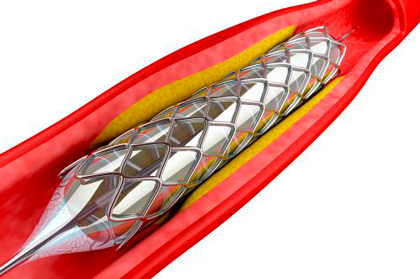The rationale behind the decision to not add another layer of metal to the artery sounded attractive and this was what paved the way for drug coated balloons as an alternative strategy to treat in-stent restenosis. “We’ve already got a stent in place, we only have to dilate and leave the drug” is what we…
Angiography-Derived FFR: Complicated Software or Imminent Reality?
Angiography-derived fractional flow reserve (FFR) demonstrated substantial usefulness, especially in patients with three-vessel lesions. The functional SYNTAX score derived from angiography has the potential to redefine prognosis and treatment strategies compared with the classic anatomical SYNTAX score. This study sought to investigate the applicability of this method in patients with multivessel lesions included in the…
CTO: in Radial Access with Similar Results to Femoral
Courtesy of Dr. Carlos Fava. One of the characteristics of chronic total occlusion (CTO) is the use of two access routes: femoral and radial. The radial approach is safer, but it has not been thoroughly analyzed in this type of PCI. The study looked at 3709 patients undergoing left main percutaneous coronary intervention (PCI) for…
Asymptomatic Coronary Artery Disease, Silent Ischemia: A Cardiologist’s Headache
We need more evidence to guide us in the management of silent ischemia. Confirmed asymptomatic coronary artery disease is a problem for cardiologists, who lack enough evidence to guide a risk-benefit assessment that justifies revascularization. Revascularizing the outcome of a functional assessment may reduce the rates of death and infarction, or it may just be…
Abluminal Sirolimus and luminal CD34 antibody layer: Is COMBO the Future of Stents?
This large cohort of patients treated with the dual therapy COMBO stent has showed excellent outcomes after one year (MASCOT Post Marketing Registry). Long term follow up is still ongoing. The COMBO stent is a new device with an abluminal sirolimus biodegradable polymer and a luminal layer of antibodies that promotes endothelial healing (anti CD34+)…
Revascularization in Patients with Multivessel Disease, Diabetes, and Kidney Disease
According to this new study, in patients with coronary disease, diabetes, and chronic kidney disease who underwent revascularization through angioplasty or surgery, events are similar. This is one of the first studies painting the real picture for the prognosis of patients revascularized in these conditions (diabetes plus chronic kidney disease). At first sight, these…
The 10 Most Read Articles of January
1- These Were the Most Relevant Article of 2018 in the Field of Coronary Diseases Read the best articles on coronary heart disease from 2018 at solaci website. Read more 2- The 10 Commandments of ESC’s New STEMI Guidelines The authors have given an entertaining account of the most relevant points and differences between…
Mechanical Thrombectomy in Stroke Could Have Worse Results in Low Volume Centers
The number of centers that are starting endovascular stroke therapy (EST) to treat acute stroke is growing fast, with a significant increase of cases in low volume centers. Interventional neurologists are not able to cover the high demand and interventional cardiologists are always ready to learn something new. Is this right? Should interventional cardiologists treat…
Clinical Events after Deferral of LAD Treatment Guided by FFR or iFR
iFR is a safe alternative for lesion deferral even when it comes to the left anterior descending artery (LAD). What is more, patients deferred with iFR showed significantly fewer events than patients deferred using FFR. Neither clinical cardiologists nor interventionists feel comfortable deferring LAD treatment, because it is often perceived as high risk. If functional…
Optimal Revascularization Time in Transient STEMI
Patients admitted with transient ST elevation MI and later normalize completely (symptimos disappear before being treated) are those we normally say are “undergoing a non-ST elevation MI”. This is complex, because revascularization time remains nuclear, as is whether to treat them as STEMI or non-STEMI patients. The aim of this study was to determine the…
The Ten Commandments for the Fourth Universal Definition of Infarction
The Fourth Universal Definition of Myocardial Infarction is a document developed jointly by the European Society of Cardiology (ESC), the American College of Cardiology (ACC), the American Heart Association (AHA), and the World Heart Federation (WHF). The Fourth Definition was necessary for multiple reasons, including increasingly higher troponin sensitivity. While troponin obviously does not…










